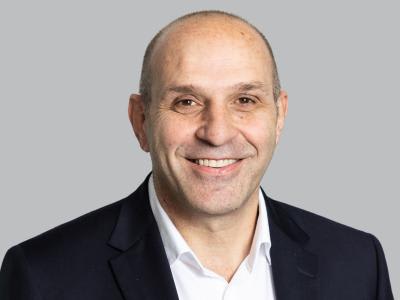Australian small and medium businesses have had a difficult time of it over the past few years. The COVID-19 lockdowns caused economic distress for many, while in recent times increased costs, rising interest rates, cash flow issues and regulatory changes have created further financial challenges.
We spoke with Frank Lo Pilato, National Head of RSM Restructuring & Recovery division, about the Small Business Restructuring (SBR) process and how it can help small businesses stay afloat in times of financial hardship.
Frank has an in-depth knowledge of Australian financial and corporate laws. He is a Partner at RSM Australia and has been with the firm since 1991. Frank has over 30 years of experience in insolvency, restructuring and recovery.
What is Small Business Restructuring (SBR)?
SBR was introduced on 1 January 2021 as part of the federal government’s response to the COVID-19 pandemic. It is a process designed to help small and medium businesses facing financial distress.
“SBR is a relatively new process that was brought out after COVID,” said Frank. “It involves appointing an SBR Practitioner, who is a registered insolvency practitioner, to help develop a plan to restructure debt while continuing business operations.”
What are the eligibility criteria for a business to qualify for SBR?
To be eligible for SBR, your business must:
- have total liabilities which do not exceed $1 million
- be up to date on tax lodgements and employee entitlements
- have employee entitlements paid in full which critically relate to both superannuation and wages.
“The other criterion is that the current and recent directors must not have been directors of a company that has been under restructuring or subject to a simplified liquidation process in the last seven years,” said Frank.
How does SBR differ from voluntary administration?
SBR offers several advantages over voluntary administration:
- It allows business directors to retain control during the restructuring process, unlike traditional insolvency procedures where control shifts to administrators.
- It reduces disruption to operations. The business can carry on business as usual during the SBR process.
- It helps preserve relationships with suppliers and customers that otherwise might be damaged beyond repair.
“Overall, SBR is a less invasive approach than voluntary administration, but it requires directors to be more involved,” said Frank. “Appointing a restructuring Practitioner also costs significantly less than appointing an administrator for voluntary administration.”
The Australian Taxation Office (ATO) recently revealed there has been a significant increase in the number of SBR appointments since its inception:
- Appointments have grown in number to reach an average of more than 100 per month, which puts the SBR process on track to surpass the number of voluntary liquidations.
- Restructuring appointments grew by over 200% in 2023-24 compared to 2022-23 and now represent 12.9% of all external appointments.
“When SBR was first introduced a few years ago, we didn’t see a huge appetite for it, but that’s changed,’ Frank noted. “SBR has gathered momentum and we’re now seeing more companies with debts under a million taking it up.”
What steps are involved in creating a Small Business Restructuring plan?
You can break the process down into five simple steps:
- Step one: Conduct initial discussions with your accountant or solicitor.
- Step two: Book a no-cost, no-obligation initial meeting with an SBR Practitioner, such as RSM.
“There’s no cost or obligation to your first discussion. We’ll get to understand your challenges and objectives and map out some high-level potential options for you, but you don’t have to move forward. It’s all about finding out whether SBR is right for you,” said Frank.
- Step three: Engage RSM formally if you feel this is the right option for your business. Let your creditors know you’ve entered into an SBR. Together with your restructuring Practitioner, you then have 20 business days to formulate a restructuring plan proposal and send it to your creditors. You can keep conducting business as usual during this period.
- Step four: Your creditors have 15 business days to respond to the plan with an outcome.
“Creditors have critical involvement in the SBR process,” said Frank. “It’s crucial to work closely with them to ensure the restructuring plan proposal addresses their concerns.”
- Step five: Meet the company’s obligations under the restructuring plan. Critically this involves the payment/contributions detailed in the plan.
“We are starting to see a number of plans which have a hybrid contribution,” said Frank. “This essentially means there is a lump sum payment complimented by monthly contributions over time, but not exceeding 3 years.”
What are the potential risks or challenges a small business might face when undergoing SBR?
"The main risks involve not gaining creditor approval for the restructuring plan and the potential for increased scrutiny from creditors during the process,” said Frank. “It's vital that the restructuring plan is realistic and aligns with the business's capacity to perform under its new financial structure."
In January 2023, the Australian Securities & Investment Commission (ASIC) published a report on small business restructurings to review the first 18-month period of the SBR process. ASIC found that creditors approved an incredible 92% of proposed restructuring plans, highlighting how successful SBR can be providing you work closely with your creditors.
An example of a successful SBR case: how this small business reduced its $600,000 debt to $120,000
It’s critical for any business owners who are considering SBR to understand that early intervention is the key to a successful outcome. By consulting with a qualified SBR Practitioner, you can assess all the options available and understand the implications of each.
“Transparency with creditors and employees throughout the process is key to maintaining trust and stability, and that starts by acting early," advises Frank.
“We've seen several successful SBR cases where businesses were able to significantly reduce their debts and continue operations. In one case, a business owed $600,000 but managed to settle it for $120,000 through SBR, saving the business and preserving jobs. This would not have been possible if they’d left it too late."
Ready for a free, confidential chat? RSM is here to help.
If your small or medium business is facing financial difficulties in the current economic environment, our team can help you understand your options so you can make informed decisions.
Contact us for a free, initial call.
If you or anyone you know is experiencing financial distress and needs mental health support, please contact:
- Lifeline on 13 11 14
- Beyond Blue on 1300 224 636
- Headspace on 1800 650 890





